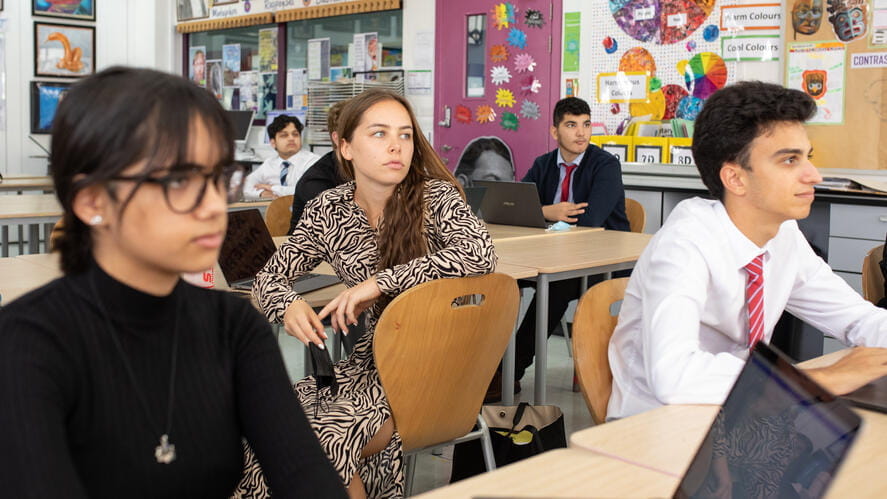We use cookies to improve your online experiences. To learn more and choose your cookies options, please refer to our cookie policy.
Admissions are now open for 2025/2026
Contact our Admissions Team today!

Abu Dhabi is one of the most family-friendly cities in the Gulf, with relaxed souks, green parks and clean beaches that make for great weekend outings with the kids. Many expats here spend a lot of their spare time socialising through sports groups and outdoor activities during the cooler months of the year. There are certainly enough top-notch sports facilities, particularly for water-based activities, to keep everyone entertained.
Unlike its neighbour Dubai, Abu Dhabi has more of a gentle pace, traditional values and a strong sense of heritage. It is a place long-term residents say has changed beyond recognition over the past few decades, and by this they mean the fact that the ‘quiet’ capital is now home to the world’s fastest rollercoaster, ultra-fashionable bars and restaurants and regularly hosts international sporting events and concerts.
Somehow, the city’s residents manage to straddle both worlds with ease, taking news of each new glitzy launch, architectural development or extravagant event with cool insouciance. You can look forward to choosing which parts of Abu Dhabi’s culture to immerse yourself in, or do as the locals do, and casually move between the old and new, local and foreign aspects of the capital with ease.
Abu Dhabi’s culture is Islamic, and you’ll see evidence of this in every part of life, from the call to prayer ringing out across the city five times a day to the modest dress codes in malls.
Abu Dhabi is the most heavily populated of the Emirates, home to over 1.6 million people. According to the emirate’s 2030 Vision the population is expected to reach 3 million by 2030.
There are seven emirates in the UAE – Abu Dhabi, Ajman, Dubai, Fujairah, Ras al-Khaimah, Sharjah and Umm al-Quwain – and the country borders Oman and Saudi Arabia.
Arabic is the official language of the United Arab Emirates, spoken by locals and used across the country for public signs, newspapers, television and formal documents. However, because of the range of nationalities living in Abu Dhabi almost all signs are in English as well as Arabic, and you’ll find English used everywhere from menus to grocery labels and on a number of television and radio channels. Almost everyone speaks conversational-level English.
Essentially, Abu Dhabi’s weather varies from hot and dry to extremely hot and dry throughout the year. The sub-tropical, arid climate means there are clear blue skies almost all year round, with a very small amount of rainfall (12 cm per year) between November and March.
During the winter months of January and February, temperatures are as low as 13C (50F) at night. The summer months see temperatures reach sizzling highs, which have been known to hit 50C (122F) during the very hottest days. At this time of year, people usually avoid being outdoors altogether, sticking to air-conditioned malls, cars and homes until the temperature drops.
The local currency is the UAE dirham (AED or Dhs) which is divided into 100 fils and is used across the whole of the United Arab Emirates.
The long white robes you’ll see Emirati men wearing are called dishdasha, and these are traditionally paired with a red and white checked head dress called a gutra; or increasingly commonly among younger UAE nationals, a baseball cap. Women wear abayas in public, long black robes sometimes embroidered or adorned with beads. The sheyla is the black headscarf worn with an abaya.
Download the Guide to Living in Abu Dhabi PDF.